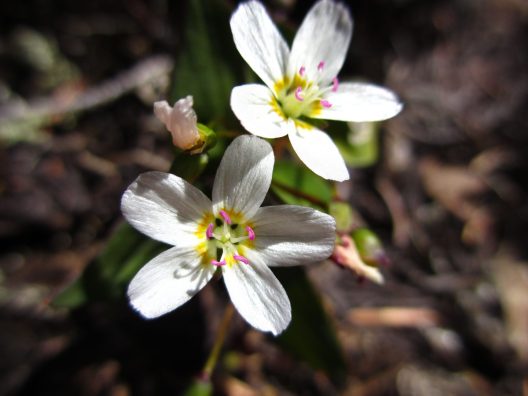Rare Plant Highlight: Pacific lanceleaved spring beauty

Claytonia multiscapa ssp. pacifica is located in the niche habitat of wet subalpine to alpine meadows. It is a treasure to the Olympic Mountains in Washington and the North Cascade Range in Vancouver B.C. Keep your eyes peeled for these delicate white flowers on the edge of melting snowfields in the late spring to mid-summer months.
Commonly known as the Pacific lanceleaved spring beauty, this flower is a hairless perennial with multiple stems from a roundish corm. Oval capsules and black shining seeds define the fruits of this beautiful flower. The flower can easily be mistaken for the C. lanceolata due to similar plant pigmentation, size, and habitat preference. However, C. multiscapa’s sessile leaves and notched petals are key diagnostic features for this subspecies.
C. multiscapa is a subspecies in the genus Claytonia which is in the Montiaceae family (Miner’s Lettuce Family) and formerly housed in Portulacaceae (Purslane Family). The likelihood of seeing C. multiscapa is somewhat rare given the species is classified as S1, or critically imperiled. The narrow range of conditions this flower can endure is dramatically altered by changing climate conditions. This makes closely observing C. multiscapa imperative as we strive to understand how environmental factors will affect their already dwindling populations. (Miller & Chambers 2006)
In the PNW, a common threat to fragile species like the C. multiscapa is trampling by hikers and recreationists in alpine areas. Populations can be decimated by trampling so it is essential to be a conscientious traveler in fragile subalpine meadows. Rare Care has documentation of this flower high above Lake Quinault in Olympic National Park. The species were found located in the depressions of rock toward the end of the hike. Other trips to find the species have remained unsuccessful due to the incredibly limited time frame the flower blooms.